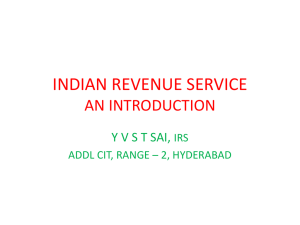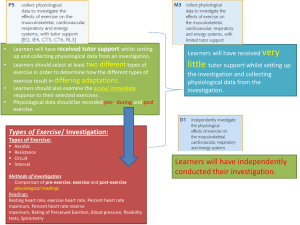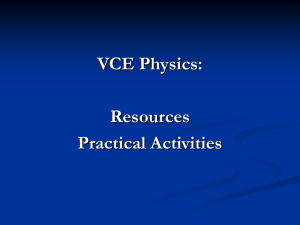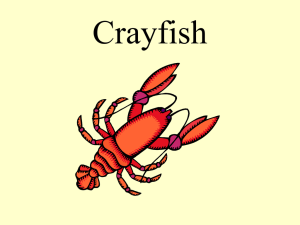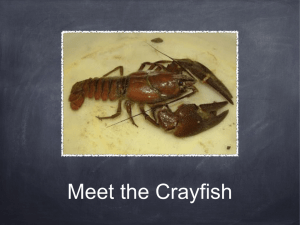FOSS Balance and Motion Grade Two
advertisement
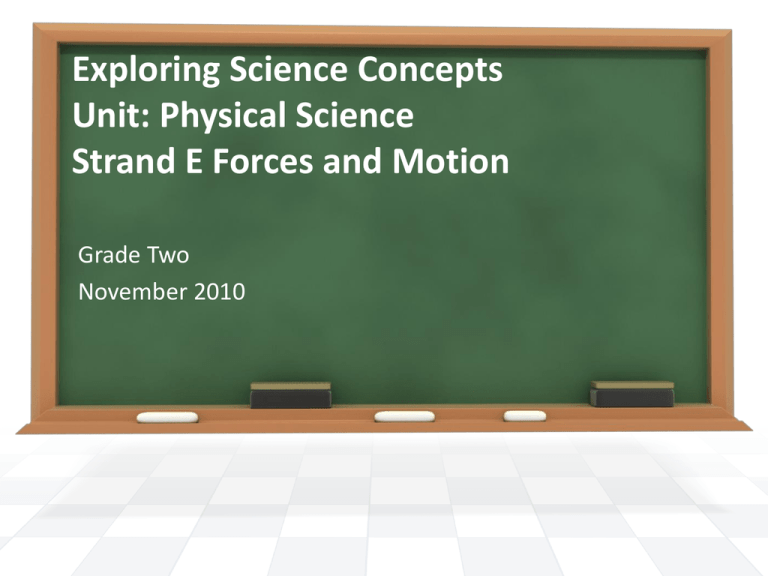
Exploring Science Concepts Unit: Physical Science Strand E Forces and Motion Grade Two November 2010 FOSS Instructional Pedagogies Inquiry Hands-On Active Learning Multisensory Learning Student-to-Student Interaction Discourse and Reflective Thinking Reading- FOSS Science Stories FOSS Web Balance and Motion Overview Three Investigations- each with subset of activities Designed for students to: Investigate materials constructively during free exploration and in a guided discovery mode. Solve problems through trial and error & develop persistence in tackling a problem. Explore concepts of balance, counterweight, and stability. Observe systems that are unstable and modify them to reach equilibrium. Discover ways to produce rotational motion & construct and observe toys that spin. Explore and describe some of the variables that influence the spinning of objects. Observe Explore and compare rolling systems with different-sized wheels. and describe the motion of rolling spheres. Acquire the vocabulary associated with balance and motion. Investigation 1 Balance Four Parts Science Concepts: • Objects can be balanced in many ways. • Counterweights can help balance an object. • A stable position is one that is steady; the object is not falling over. • The way an object balances can be changed by counterweighting. • The position of an object can be described by relating its locations to another object. Purpose: Students will… • Discover numerous ways to balance tagboard shapes. • Find ways to balance a pencil on its point, in stable positions. • Explore the concepts of balance, counterbalance, counterweight, and stability by balancing tagboard shapes, making mobiles, and engaging in other balancing projects. • Communicate observations and comparisons of balanced objects, using precise vocabulary. Investigation 1 Balance Part 1: Trick Crayfish Focus: • Objects can be balanced in many ways. • Counterweights can help balance an object. • The way an object balances can be changed by counterbalancing. Task: 1. Introduce the crayfish 2. Balance on finger 3. Can crayfish be balanced in other ways? 4. Introduce clothespins , allow inquiry, suggest moving pins in different locations. Get crayfish to balance on its noselike projection or rostrum. Investigation One: Balance Part One Trick Crayfish 5. Call to rug and ask: - What did you do to get the crayfish to balance on its nose? - Does it matter where you put the clothespins? 6. Introduce “counterweight”- use to balance in new ways 7. Challenge students to find new ways to balance their crayfish. 8. Wrap Up: - Discussion - Word Bank - Content Chart Investigation 1 Balance Part 2: Triangle and Arch Focus: • A stable position is one that is steady; the object is not falling over. • The place on which an object balances is called the balance point. • Counterweights should be placed low on an object in relation to the balance point. Tasks: 1. Revisit balancing of crayfishintroduce as a stable position; demonstrate what happens with a gentle push 2. Introduce new shapeschallenge to balance shapes on end of craft stick rather than finger 3. Discover stable & unstable positions using one/two clothespins with each shape. Investigation 1 Balance Part 2: Triangle and Arch 4. Ask: - Can you get it to balance another way? - How many ways can you make a stable position using only one clothespin for a counterweight? - Can you balance both objects at the same time? - Try working with a partner, together can you find new ways to make stable balanced systems? 5. Assess Progress : - Use Stable Positions Sheet If needed, redistribute materials and allow students to set up the systems shown in the pictures to see if they are stable 6. Wrap Up: - Word bank- stable, arch, triangle, balance point - Concept Chart- How can you tell by looking at a picture if it is a stable system? - Investigation 1 Balance Part 3: The Pencil Trick Tasks: Focus: 1. Review Part 2- recall stable systems • Counterweights should be and to think about where clothespins placed low on an object in were put. relation to the balance point. 2. Challenge students to balance • The position of an object can tagboard pencil on craft stick using clothespins; remind students to test be described by relating its stability. location to another object. 3. - Call to rug- discuss balancing , ask: Where did you put the clothespins to get a stable system? Can you get a stable system using no clothespins? One? Two? Where did you place the counterweights to get a stable system? Investigation 1 Balance Part 3: The Pencil Trick 4. 5. 6. Give the real pencil challenge- balance a sharpened pencil on its point on the craft stick Introduce the wire- wire can be attached to the pencil, but not used to tie pencil to the craft stick Assess Progress via teacher observation; provide hint if needed; allow students to share successes. 7. Wrap Up: - Discussion: How might you balance a stick on top of a 2-liter soda bottle? How could you balance a chair on a tight rope? Word Bank Content Chart: What is the trick to balancing an object on one point? Read science story, Make It Balance! What we learned from Investigation 1 Balance Science Concepts: • Objects can be balanced in many ways. • Counterweights can help balance an object. • A stable position is one that is steady; the object is not falling over. • The way an object balances can be changed by counterweighting. • The position of an object can be described by relating its locations to another object. Investigation 2 Spinners Three Parts Science Concepts: 1. Objects and systems that turn on a central axis exhibit rotational motion. 2. The amount and position of mass affect how an object rotates. 3. A push or pull (a force) is needed to initiate rotational motion in objects and systems. Investigation 2 Spinners Part 1 Tops Inquiry Question: • How can spinning tops be changed? Investigation Summary: • Students make tops from plastic disks and shafts, and spin them. After finding the arrangement of parts that produces the best top, they make tops from other materials. Science Content: 1. Objects and systems that turn on a central axis exhibit rotational motion. 2. You need a force to start a top spinning. 3. The amount and position of mass affect how the object rotates. Investigation 2 Spinners Part 1: Tops How can spinning tops be changed? Important Points to Lesson: 1. Do not tell students how to make tops- the challenge is how to use the materials to make a good top. 2. Discuss Top Progress (#6) introduce “rotating” 3. Challenge students further: • Best design for a top that spins a long time? • Best design for a top that spins fast? • Does it make a difference if big or small disks are used? 4. Assess Progress (#10) 5. Wrap Up- word bank, concept chart 6. Science Stories Push or Pull? Investigation 2 Spinners Part 2 Zoomers Inquiry Question: • How can a spinning object be kept in motion? Investigation Summary: • Students use disks and a length of string to make zoomers. Science Content: 1. There are different ways to initiate rotational motion. 2. The motion of an object can be changed by pushing or pulling. 3. Tops and zoomers both spin, but in different ways. Investigation 2 Spinners Part 2: Zoomers How can a spinning object be kept in motion? Important Points to Lesson: 1. Review type of motion tops make- indicate zoomers also rotate (spin) when in motion. 2. Demonstrate the zoomer in action 3. Demonstrate knot tying 4. Some students will have difficulty getting zoomer assembled and going; let them work at the problem for a while before assisting 5. Wrap Up- word bank, concept chart 6. Science Stories Tools and Machines & the story Move It, But Don’t Touch it Investigation 2 Spinners Part 3 Twirlers Inquiry Question: • How can air start an object spinning? Investigation Summary: • Students make twirlers (flying spinners) that rotate by air resistance, first modifying soda straws with wings, and then making twirly birds from paper and paper clips.. Science Content: 1. Variations in design can influence the rotational motion of spinning objects. 2. Air resistance can act as the force that initiates rotational motion. Investigation 2 Spinners Part 3: Twirlers How can air start an object spinning? Important Points to Lesson: 1. At start review spinning motion of tops and zoomers. Point out a force had to be applied to start the spinning motion. 2. Challenge students to get straw to spin- let them discover 3. Limit directions by you on how to assemble twirlers 4. Test twirlers 5. Use questioning (#8 #9) to assess progress 6. Wrap Up- word bank, concept chart 7. Science Story Things That Spin Investigation 3 Rollers Three Parts Science Concepts: 1. Things move in many different ways. 2. Wheels and spheres roll down a slope. 3. Axles support wheels. 4. Wheel-and-axle systems with wheels of different sizes roll toward the smaller wheel. 5. The amount and location of an added weight can change the way a system rolls. Investigation 3 Rollers Part 1 Rolling Wheels Inquiry Question: • How can a wheel-and-axle system be changed? Investigation Summary: • Students set up cardboard ramps down which they roll plastic disks. They put the disks on slim shafts to make wheel-and-axle systems. They try all kinds of configurations of wheel size, axle length, and axle position to get the rolling systems to perform a variety of tricks. Science Content: 1. Wheels roll down a slope. 2. A slope is a surface that is higher on one end. 3. Axles support wheels. 4. Wheel-and-axle systems with wheels of different sizes roll toward the smaller wheel. Investigation 3 Rollers Part 1: Rolling Wheels How can a wheel-and-axle system be changed? Important Points to Lesson: 1. At start identify rotating(spinning) as one kind of motion and how it is identified. 2. Discuss early results using ramps and large wheels(#6) before introducing axles 3. After making tricky rollers provide small wheels 4. Encourage sharing of results and collaboration 5. Show and Tell (#12) Discuss similarities in design- identify roll fast, farthest, slowest 6. Wrap Up: word bank and concept chart Investigation 3 Rollers Part 2 Rolling Cups Inquiry Question: • Can we predict the behavior of a rolling cup? • What happens if weight is added to a rolling-cup system? Investigation Summary: • Students roll paper cups down ramps. They observe the way cups roll and use the predictable curved rolling path to meet challenges. They put cups together to make them roll straight and weight them in various ways to see how weight affects rolling. Science Content: 1. Cups roll in the direction of the smaller end. 2. To roll straight, two cups can be taped together so the ends are the same size. 3. The amount and location of an added weight can change the way a system rolls. Investigation 3 Rollers Part 2: Rolling Cups Can we predict the behavior of a rolling cup? What happens if weight is added to a rolling-cup system? Important Points to Lesson: 1. Review kind of motion wheels make-rolling 2. Maintain inquiry nature of cup rolling task. 3. Pose questions (#4) prior to “Park the Car Problem” 4. Try to go straight- let students try their ideas 5. Add weight (coins) to straight roller- discuss (#13) 6. Wrap Up: word bank, content chart 7. Science stories Rolling, Rolling, Rolling! Investigation 3 Rollers Part 3 Rolling Spheres Inquiry Question: • How can we make a runway system that will keep a marble rolling? Investigation Summary: • Students roll marbles in cups and down runways. They work with the flexible runways to make the rolling marbles do tricks. As a culminating experience, students work together as a class to connect the runway sections to make one long runway through which a marble can roll nonstop. Science Content: 1. Spheres are round in all directions and roll in all directions. 2. A runway must be high at the start and low at the finish for a sphere to roll the complete length. 3. Spheres roll down a slope. Investigation 3 Rollers Part 3: Rolling Spheres How can we make a runway system that will keep a marble rolling? Important Points to Lesson: 1. At start review rolling motion of wheels and cups; contrast with shape of a sphere. 2. Free exploration- challenge students to find out how marbles roll in the runways. 3. Marble tricks- care with foam runway 4. Teams of students may work together to connect their runways. Demonstrate how to connect two runways. 5. Discuss key points before building LONG runway 6. Keep it trial and error till success is met. 7. Assess Progress with Marble Runways worksheet 8. Wrap Up: word bank and concept chart 9. Science stories Strings in Motion FOSS Web animation Part 1: Trick Crayfish Wrap Up Discussion Questions: Where should you put clothespins on a paper crayfish to get it to balance on its side? How could you get the crayfish to balance straight up and own on its tail? Word Bank: crayfish, balance, clothespin, counterweight Content Chart- lists statements that summarize knowledge acquired from investigations - How do you know when something is balanced? - Think about all the different ways you balanced the crayfish. Is there anything you noticed that is always the same? Formative Assessment -Part of the shape resting on the stick is the balance point. - small black rectangle is end of craft stick




